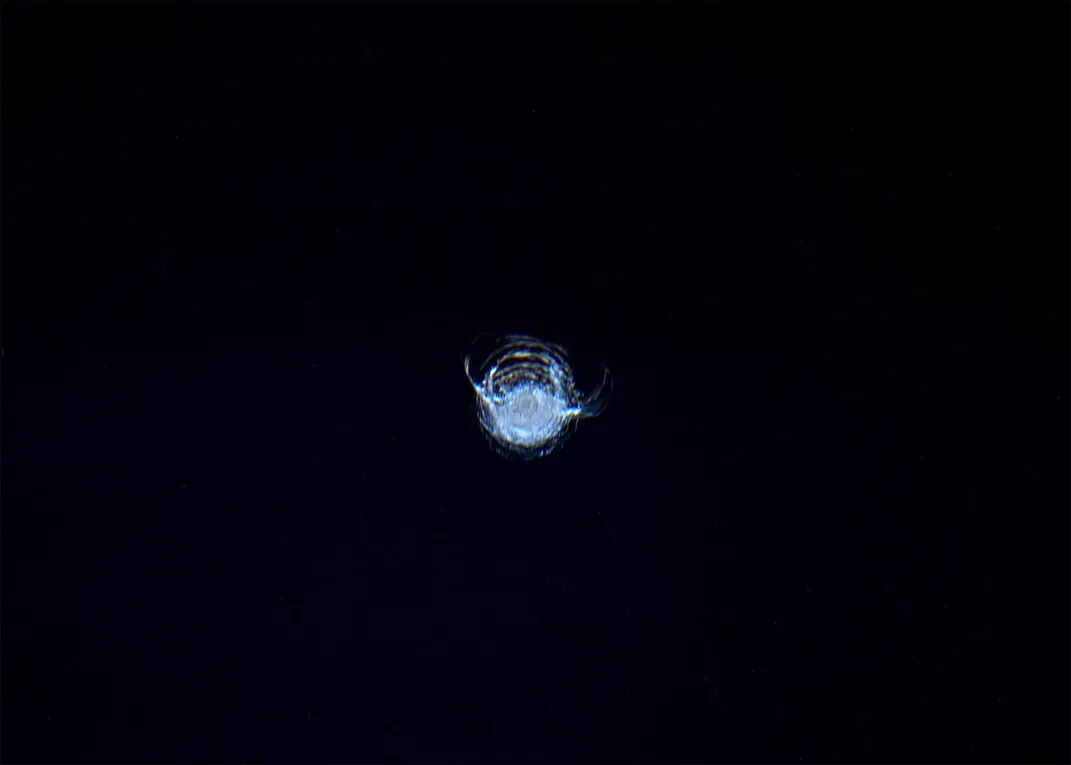Adopt a Piece of Space Junk and Learn About Its Dangers
An amusing project about a very real problem
From the ground, the night sky might seem pretty clear, but the outer reaches of the atmosphere are far from clean. Since humanities' first forays into space, the skies have grown cluttered with all manner of space junk—from old rocket boosters and broken satellite debris to a spatula an astronaut dropped during a space walk. Now, an art project is taking aim at the junk, highlighting its dangers using a combination of social media, videography and some experimental music.
Titled “Project Adrift,” the three-pronged piece is the brainchild of documentary filmmaker Cath Le Couteur and musician Nick Ryan and is sponsored by London’s Royal Astronomical Society. The two have teamed up to put together a piece that aims to personalize an increasingly problematic, but little-known side of space, Daniel Oberhaus reports for Motherboard.
"Tackling the problem of space debris is one of humankind's greatest environmental challenges, but is also perhaps the one that is the least known," Hugh Lewis, head of astronautics research at the University of Southampton, tells Ruth Holmes for Phys.org. "Every day, we use and rely on services provided by satellites without ever realizing how vulnerable they are."
The European Space Agency (ESA) estimates that there could be as many as 170 million pieces of man-made space junk circling the Earth. Of that, about 670,000 are larger than a centimeter, and 29,000 are larger than ten centimeters. That may not sound paricularly large, but the real problem is speed, Oberhaus reports. Small objects in orbit can quickly pick up a lot of momentum and the tiniest fragments can zoom around the planet at thousands of miles per hour. When they run into something, this debris can cause serious damage, as seen when what is thought to be a rogue fleck of paint struck the International Space Station and cracked a window earlier this year.
“An object up to 1 cm in size could disable an instrument or a critical flight system on a satellite. Anything above 1 cm could penetrate the shields of the Station’s crew modules, and anything larger than 10 cm could shatter a satellite or spacecraft into pieces,” the ESA wrote in May.

So the duo teamed up to try to personalize space junk in three ways. First is the “Adopt” portion of the project. The two set up several Twitter accounts in the name of three famous pieces of space junk – Vanguard I, the oldest satellite still in orbit; a fragment of the Chinese weather satellite Fengyun-1C, which was destroyed in an anti-satellite weapons test in 2007 and nearly doubled the amount of known space junk in orbit; and SuitSat, a Russian space suit equipped with a radio that was thrown out of the ISS in 2006, Sarah Weber writes for The Daily Dot.
In addition to the Twitter accounts, Le Couteur and Ryan have put together a short documentary on the history of space junk, as well as an experimental art piece that tracks about 27,000 pieces of space junk and transforms their orbital patterns into music. By drawing in people through art and social media, the two hope to educate the public about what happens when things are left to drift through space.